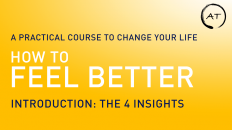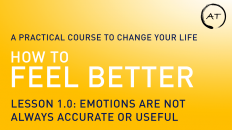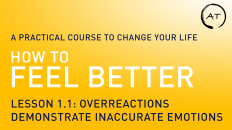This guide is about feeling better. In order to feel “better” whatever you currently feel has to improve.
The real magic in this guide is contained in these two observations:
- Emotions change.
- You can learn to change your own emotions.
Everything I’ll show you is totally natural. There aren’t any tricks or mystical silver bullets here. You just need to understand what emotions are. This is covered in the first section of this site.
Emotions can change. Here’s an example:
Matt and I are in line to get a burrito. We got burritos yesterday, too. I mean, burritos are awesome, right? Yesterday, Matt forgot his wallet, so I gave him $10 to pay for his burrito. Of course I would lend Matt money. It’s Matt!
Today, he doesn’t pay me back or offer to treat me to lunch. In fact, he asks for $10 again. What the heck, Matt?! I’m not happy. I’m angry.
I assume that Matt is going to use my money to buy his lunch, again.
But I decide to play it out, and I give Matt the $10 bill.
Matt gives me a $20 in return, making us even.
My anger at Matt is suddenly replaced by relief and gratitude. I’m also feeling a little guilty. How could I doubt good ol’ Matty Boy?
My emotion changed. It’s obvious why. I made an inaccurate assumption around what Matt wanted my $10 for. When my assumption was corrected, my emotion changed.
The most interesting point in the whole example is the moment Matt asks me for the second $10 dollar bill. My mind plays out all sorts of scenarios and decides which one to react to.
- I could believe that Matt is making change to reimburse me.
- I could believe that Matt isn’t my friend and only uses me for my burrito hook-up.
- I could believe that Matt is really forgetful now that his new baby keeps him up all night. This makes me empathize for him instead of feeling angry.
Whatever my mind tells me can change my mood. Therefore, I can choose to tell myself something that makes me feel good. Ultimately, though, I need to tell myself the most accurate blank.
What this means is that you can revisit your past emotional memories. Remember the exercise to find the memory behind an emotion.
By looking at the memory behind an emotion, you can change your inaccurate assumptions to change how you feel.
You can feel better. Or, if the memory becomes strictly factual, it will lose it’s emotional charge. The emotion will release. This is called Catharsis.
You can let go of negative emotions this way. When a negative emotion is released, you will feel better,


